This past weekend I had a lovely visit with my mother at her farm in New Hampshire. While I was there, I finally dug up some Lady’s Bedstraw which I had planted about 10 years ago. At the same time that I planted a bed of Lady’s Bedstraw, otherwise known as Yellow Bedstraw or Galium verum, I also put in a bed of madder (Rubia tinctorum, both ordered as seedlings from Richters in Canada). I dug up the madder two years ago when I wanted to establish a new bed, but hadn’t gotten around to the bedstraw.
When I first planted it, my mother and I very diligently prepared the raised beds with lime and chicken manure and other amendments, and then they sat and mostly had to fend for themselves. The boards holding up the beds rotted. The blackberries moved in. The bedstraw held its own.
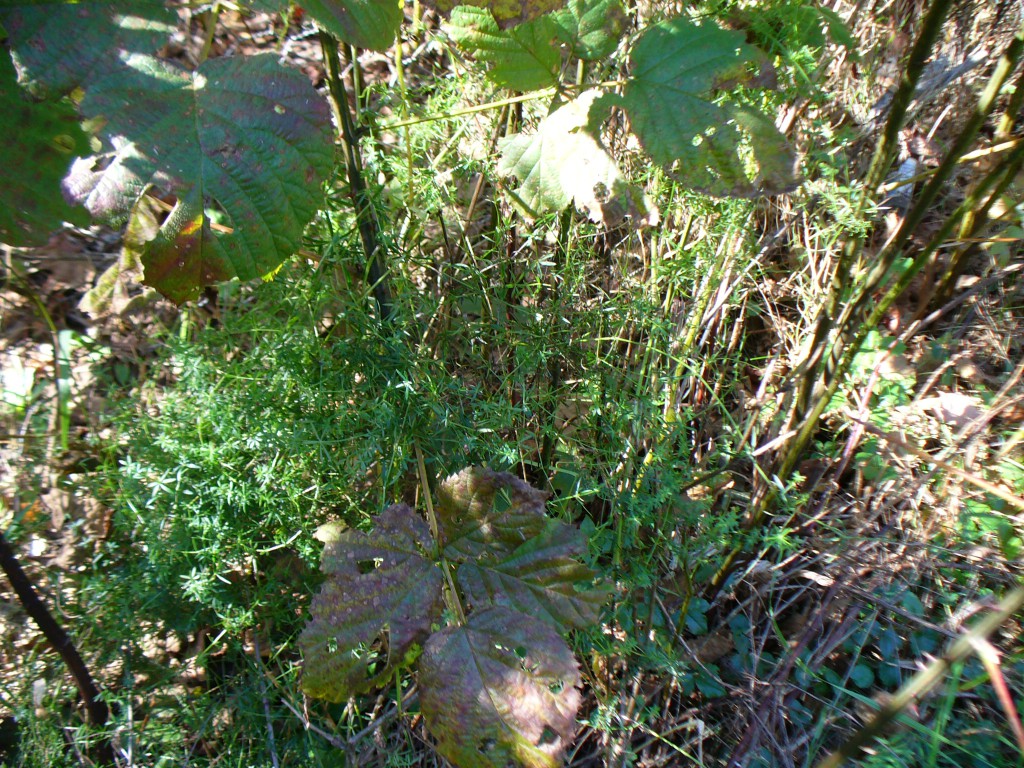
People usually say to harvest the roots after 3 years. Better late than never. After so many years in the same location, the bedstraw has decided to expand its territory. We do not want it to spread too far in case it proves difficult to control.
I dug about a fifth of the bed on Sunday October 9th. The roots and tops were hard to separate, so I collected them together in bags.

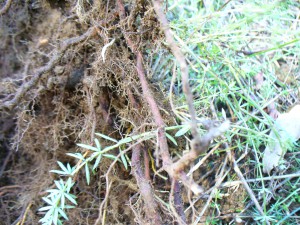
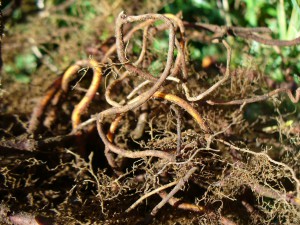
Like other bedstraws and madder, the plants spread by setting down roots from the nodes on the stems, as well as by seed. A lot of the roots were small. A few were amazingly thick and interlocked. Even though it’s fall and the aerial parts of a plant are supposed to be dying back, there was plenty of fresh greenery.
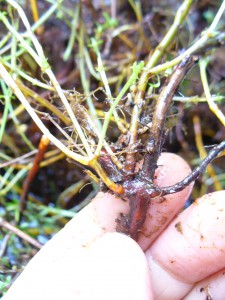
The combined weight of the bags was 17 lbs.! A lot of that was soil. Rinsing the soil off, separating the greenery from the roots, and cutting up the roots took me a couple days.

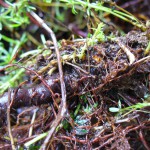
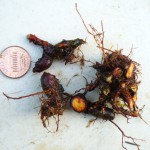


After washing and trimming, the roots weighed 5 pounds. I plan to use these roots, and perhaps the tops, for the first in a series of rya rugs. My idea is to dye the wool for each rug with locally grown or gathered natural dyes. The palette of each rug will be determined by certain parameters, for example, whatever 5 lbs. of Lady’s Bedstraw can dye. Stay tuned for the dyeing results.

One thought on “Digging Lady’s Bedstraw”
Comments are closed.